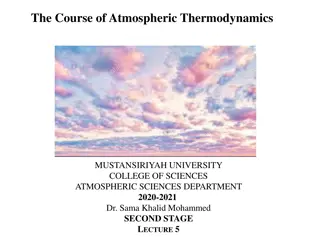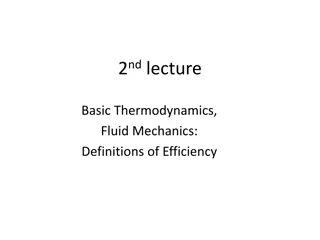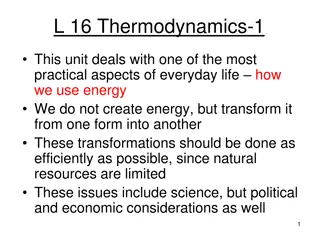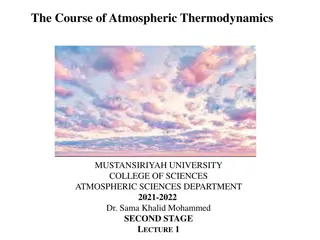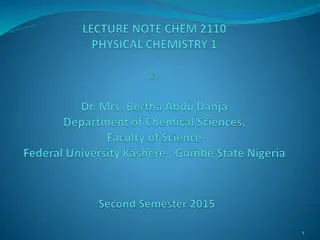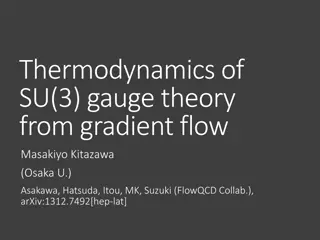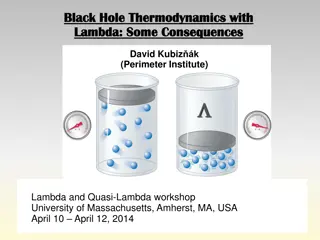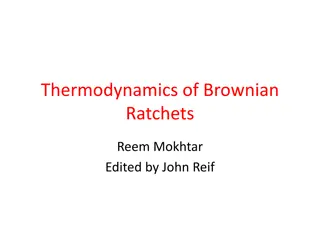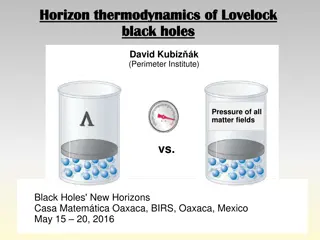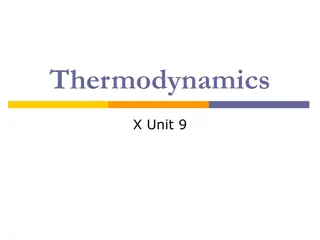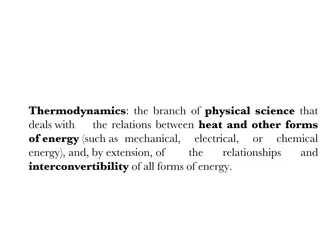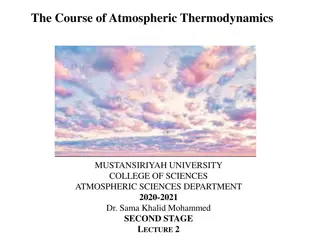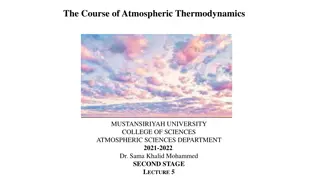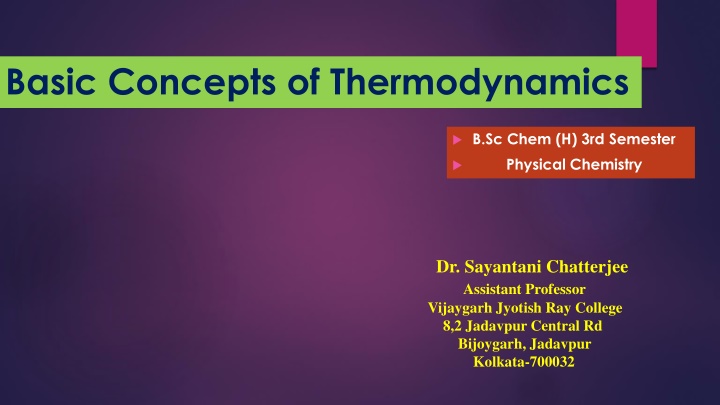
Thermodynamics: Laws, Systems, and Common Terms
Explore the fundamental concepts of thermodynamics, including the laws governing energy conservation, types of systems, and key terminology. Dive into the branches of physical chemistry where heat transfer and energy transformations take center stage.
Download Presentation

Please find below an Image/Link to download the presentation.
The content on the website is provided AS IS for your information and personal use only. It may not be sold, licensed, or shared on other websites without obtaining consent from the author. If you encounter any issues during the download, it is possible that the publisher has removed the file from their server.
You are allowed to download the files provided on this website for personal or commercial use, subject to the condition that they are used lawfully. All files are the property of their respective owners.
The content on the website is provided AS IS for your information and personal use only. It may not be sold, licensed, or shared on other websites without obtaining consent from the author.
E N D
Presentation Transcript
Basic Concepts of Thermodynamics B.Sc Chem (H) 3rd Semester Physical Chemistry Dr. Sayantani Chatterjee Assistant Professor Vijaygarh Jyotish Ray College 8,2 Jadavpur Central Rd Bijoygarh, Jadavpur Kolkata-700032
Todays learning objectives What is Thermodynamics Laws related to Thermodynamics What is system and surroundings Types of system Types of process Classification of functions Statement and mathematical form of Thermodynamics 1st law Concepts of Enthalpy
Thermodynamics Thermodynamics Thermodynamics is a branch of Physical Chemistry in which the motion of heat i.e. the change of heat of any chemical substance during any chemical or physical change is studied. Thermodynamics monitors the effects of heat , energy and work of a system Thermodynamics is only deals with macroscopic changes and observations.
Laws of Thermodynamics Zeroth law of Thermodynamics Zeroth law of Thermodynamics- - When two bodies are in thermal equilibrium with a When two bodies are in thermal equilibrium with a third body, they are also in thermal equilibrium with each other. third body, they are also in thermal equilibrium with each other. First law of thermodynamics- This law is related to conservation of energy i.e. energy can neither be created nor be destroyed, it can only be transformed from one form to another. Second law of thermodynamics- The heat taken from the source is not completely convertible to mechanical work i.e. in other words this is impossible to construct an engine with 100% efficiency. Third law of Thermodynamics- For an isolated system e.g. for any perfect crystalline solid at zero kelvin temperature the entropy will be zero.
System- The part of the system which is under thermodynamic observation Surroundings- The remaining part other than system is called surroundings
Thermodynamic systems Thermodynamic systems
Path function Path function A path function does depend on the path followed in getting from the starting to the final step. They are inexact differentials.
Path function Path function Work (W) and heat (q) are path functions. Work (W) and heat (q) are path functions. Two mountain climbers of equal mass scale the same cliff. One climbs straight up while the other backslides numerous times on the way up Who did more work?
Difference between Reversible and Irreversible Difference between Reversible and Irreversible Processes Processes
First Law of First Law of Thermodynamics Thermodynamics
Concepts of Enthalpy Concepts of Enthalpy
Next classs objectives Next class s objectives 1. Heat Capacity 2. Joule s Experiment 3. Joule Thomson Experiment



